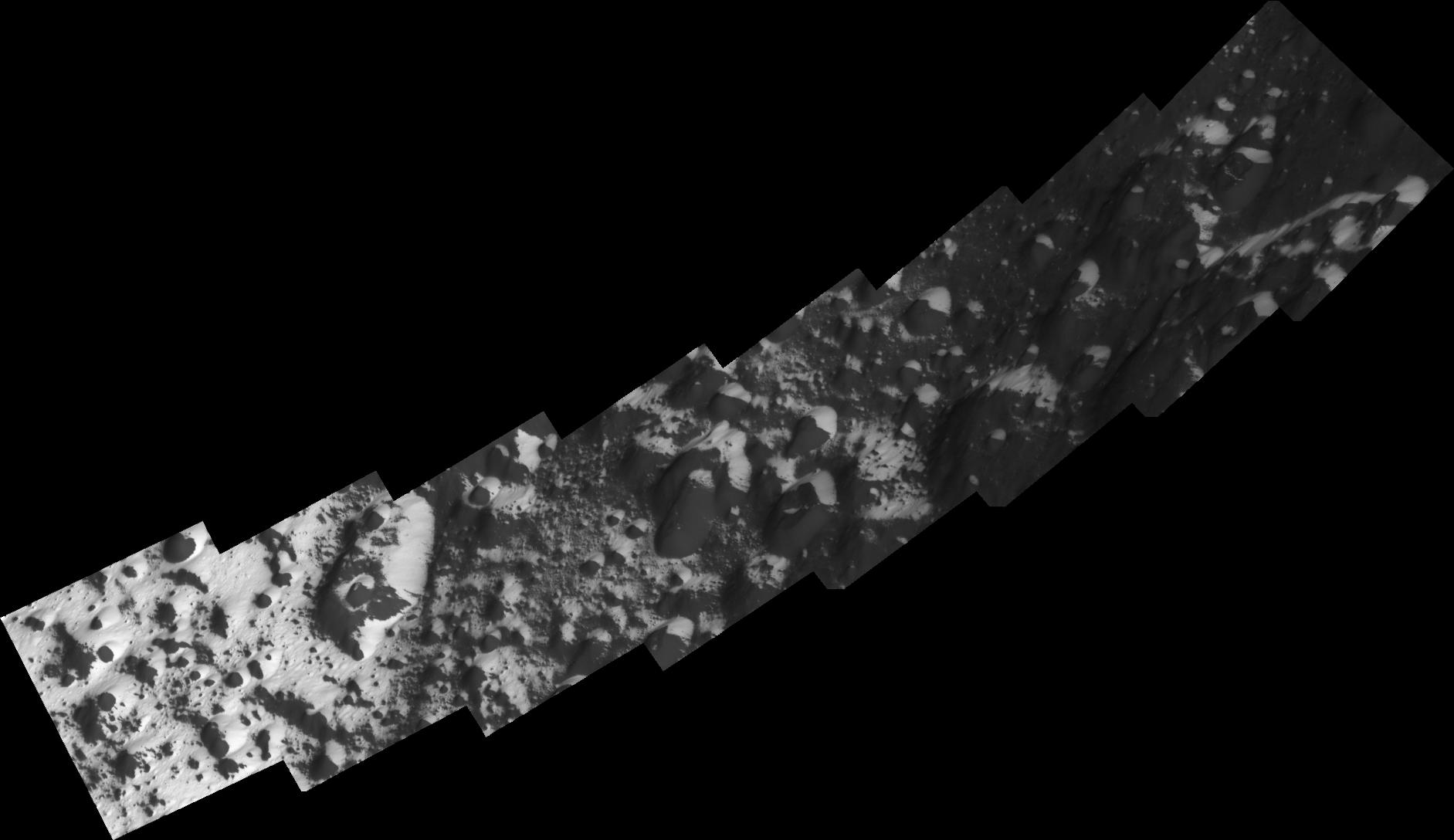The Transition Zone

| PIA Number | PIA08380 |
|---|---|
| Language |
|
Soaring above the alien, icy wastelands of Saturn's moon Iapetus, NASA's Cassini spacecraft captured a series of high-resolution images of the transition region from dark to bright terrain at southern middle latitudes that have been mosaicked together in this view.
An important characteristic of the terrain in the boundary region is that the isolated bright patches are mainly found on slopes facing toward the bright trailing hemisphere or toward the south pole. The same polarity is found within the bright terrain, where the dark material can be seen at the bottom of craters and on equator-facing slopes. These indicate that thermal effects are at play in painting the surface of Iapetus, 1,468 kilometers (912 miles) across.
The mosaic consists of eight image footprints across the surface of Iapetus. The view is centered on terrain near 38.6 degrees south latitude, 171.3 degrees west longitude. Image scale is approximately 52 meters (171 feet) per pixel.
The clear spectral filter images in this mosaic were obtained with the Cassini spacecraft narrow- angle camera on Sept. 10, 2007, at a distance of approximately 5,000 kilometers (3,100 miles) from Iapetus.
The Cassini-Huygens mission is a cooperative project of NASA, the European Space Agency and the Italian Space Agency. The Jet Propulsion Laboratory, a division of the California Institute of Technology in Pasadena, manages the mission for NASA's Science Mission Directorate, Washington, D.C. The Cassini orbiter and its two onboard cameras were designed, developed and assembled at JPL. The imaging operations center is based at the Space Science Institute in Boulder, Colo.
For more information about the Cassini-Huygens mission visit http://saturn.jpl.nasa.gov . The Cassini imaging team homepage is at http://ciclops.org .
Credit: NASA/JPL/Space Science Institute
